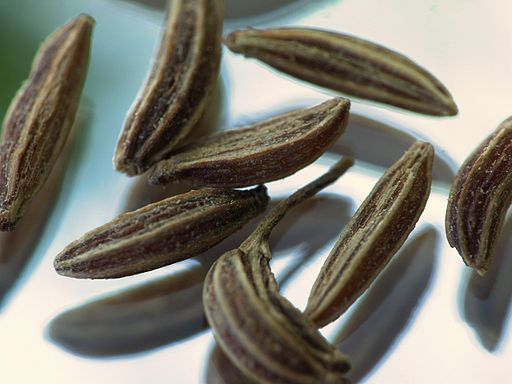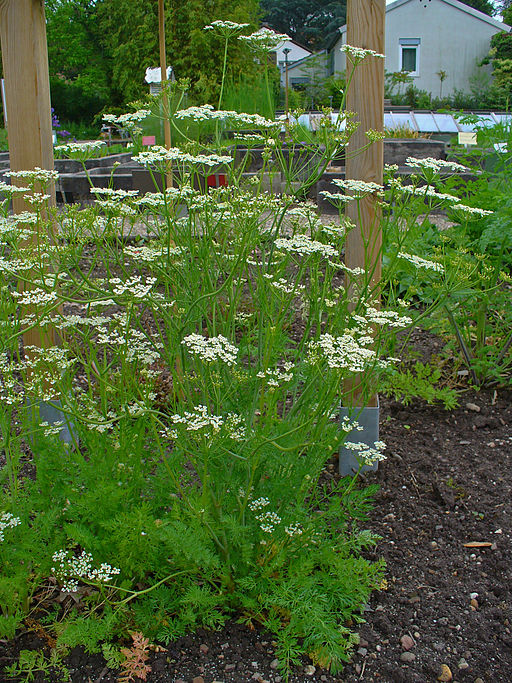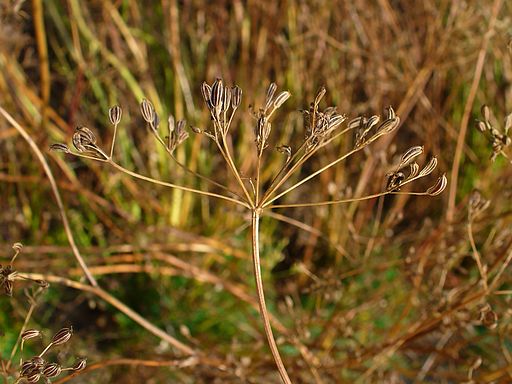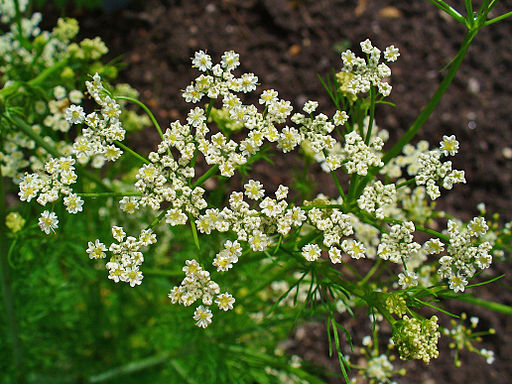Caraway – Carum carvi (Umbelliferae)
Appearance:
The leaves of these dainty herb garden plants are thread-like and bright green; the stems are smooth, reach 60 cm (2 ft) in height and support dainty heads of purple/white flowers in high summer. These are followed by the familiar black, ribbed seeds used to flavor confectionery, cookies, bread and liqueurs.

Description:
Caraway perpetuates itself in the garden by self-sown seed, ensuring a filmy greenness among your herb garden.
Usage and History:
Herb garden plants of ancient cultivation, legend endows them with the power to prevent lovers and doves from straying. It was thus a popular ingredient of love potions in medieval times and was fed to doves, pigeons and poultry to prevent them from wandering. Caraway seeds are used to flavor meat dishes, breads, soups, cheeses – you name it. Also try powdered caraway in meat loaf, pork dishes and beef stews. The roots may be boiled and served with butter and lemon juice. Caraway seeds are known to be an aid to digestion.
Cultivation:

Seedlings do not transplant well, so sow in situ in spring or autumn (fall). Caraway thrives in all but the most humid warm regions, the germination is quicker from fresh seed. Afterwards you will need to thin out the little herb garden plants to around 15 cm (6 ins) apart – grow in either in groups or in rows. When they are grown for their parsnip-like roots it is best to plant them in rows like a normal vegetable. They’ll grow in almost any well drained soil but need lots of sun to ensure good quality seeds and a good flavor.
Harvesting:

To harvest the seed, cut the flower head once the seed is ripe (and before it scatters) and either hang the heads up in a paper bag or folded in a clean cloth. This way the seed can fall naturally when it is fully ripe. Sieve out any pieces of stalk and store in an airtight container. One common practice is to scald the freshly collected seed with boiling water to rid it of insects which can then be dried off in the sun before storing. Just do not try and plant a fresh crop of herb garden plants after scalding.
The Author:
Pete Steel has grown herbs for 25 years in several different climates and soils.
